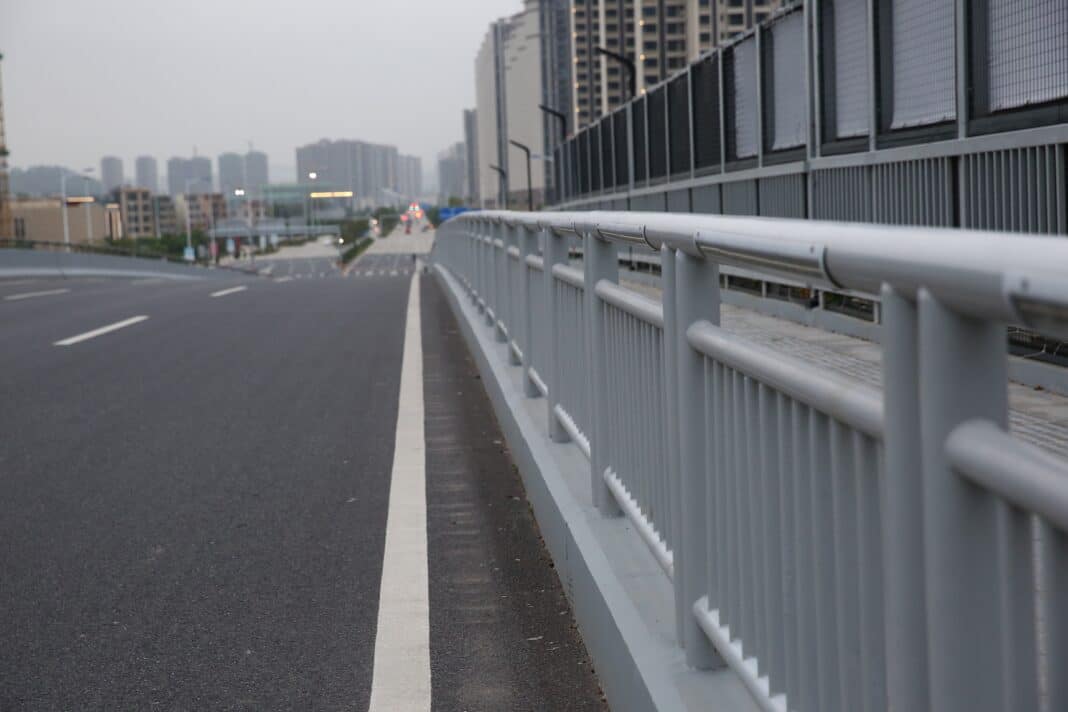In the bustling thoroughfares and quiet lanes of our urban landscapes, pedestrian guardrails stand as silent sentinels of safety, channeling the flow of foot traffic and serving as a shield against the dangers of the bustling streets. Often overlooked yet fundamental to pedestrian safety, these metallic barriers are not merely functional; they embody a critical aspect of urban planning designed to reduce accidents and enhance the well-being of city dwellers. This article delves into the significance of pedestrian guardrails, exploring their purposes, effectiveness, and the vital role they play in maintaining safety and order in our public spaces. As we examine how these simple structures help save lives and protect the vulnerable, it becomes clear that guardrails are indispensable tools in the quest for safer, more navigable cities.
The Purpose of Pedestrian Guardrails
Pedestrian guardrails are ubiquitous in urban settings, and while they might appear to be mere street furniture, their roles in enhancing pedestrian safety and traffic management are substantial.
Guiding Pedestrian Movement
One of the primary functions of guardrails is to channel pedestrian movements along safer, predetermined paths. By clearly delineating where pedestrians should walk, guardrails help minimise the risk of accidents by keeping foot traffic separate from vehicular lanes. This is particularly important near schools, parks, and high-traffic commercial areas where the mix of pedestrians and vehicles can create dangerous situations.
Preventing Jaywalking
Guardrails are strategically placed to discourage pedestrians from crossing roads at undesignated spots. By funneling foot traffic to crosswalks and traffic signals, guardrails reduce the incidence of jaywalking. This not only lowers the risk of pedestrian accidents but also helps maintain a smooth flow of vehicular traffic, minimizing congestion and the potential for collisions.
Enhancing Safety Near Hazards
In areas where pedestrian pathways are close to construction sites, open drains, or other hazards, guardrails serve an essential protective role. They act as physical barriers that prevent unintended or accidental entry into dangerous areas, thus preventing injuries and enhancing overall public safety.
Psychological Impact
Beyond their physical utility, guardrails also have a psychological impact on both pedestrians and drivers. For pedestrians, the presence of guardrails can create a sense of security, encouraging more people to use walkways and footpaths safely. For drivers, guardrails signal areas of high pedestrian activity, promoting heightened awareness and slower speeds, particularly in urban or congested areas.
Through their multifaceted roles, pedestrian guardrails contribute significantly to the safety and efficiency of urban environments, proving that even the simplest structures can have a profound impact on community well-being.
Assessing the Effectiveness of Guardrails
Evaluating the effectiveness of pedestrian guardrails involves examining their impact on safety statistics, pedestrian behavior, and traffic flow. Various studies and observations have shown that guardrails can significantly influence urban safety dynamics.
Safety Statistics
One of the most direct methods to assess the effectiveness of pedestrian guardrails is through the analysis of safety data before and after their installation. Numerous studies have demonstrated a decrease in pedestrian accidents and fatalities in areas where guardrails are installed. For example, pedestrian guardrails placed near schools and busy intersections have been associated with lower rates of pedestrian-vehicle collisions. This data provides tangible evidence that guardrails serve as an effective safety measure.
Impact on Pedestrian Behavior
Pedestrian guardrails also play a crucial role in shaping pedestrian behavior. Observational studies often note a reduction in jaywalking and other unsafe crossing practices when guardrails are present. By directing pedestrians to use crosswalks and designated crossing points, these barriers help instill safe walking habits. Additionally, the physical presence of guardrails can deter pedestrians from taking shortcuts across busy roads, thereby reducing exposure to potential accidents.
Traffic Flow and Congestion
Another aspect of the effectiveness of pedestrian guardrails is their impact on vehicular traffic. Guardrails can contribute to smoother traffic flow by reducing the instances of sudden stops caused by pedestrians attempting to cross at inappropriate points. This not only helps in reducing traffic congestion but also minimizes the risk of accidents caused by abrupt braking or swerving to avoid pedestrians.
Comparative Studies
Comparative studies between areas with and without pedestrian guardrails offer additional insights into their effectiveness. Such comparisons often reveal that regions with well-planned and properly maintained guardrail systems experience fewer pedestrian-related incidents and better overall traffic management. These studies underscore the importance of not only having guardrails but also ensuring they are appropriately designed and strategically placed.
Design and Placement Considerations
The design and placement of pedestrian guardrails can greatly impact their effectiveness. Optimal placement involves positioning guardrails in areas where pedestrian paths intersect with vehicular routes, especially near schools, parks, and busy commercial districts. The design should ensure visibility and durability while complementing the local aesthetic.
Local Safety Improvements
In many towns and cities, the introduction of pedestrian guardrails has led to measurable improvements in safety. For instance, areas that have installed guardrails around school zones report fewer incidents of children running into the street. Similarly, busy urban intersections equipped with guardrails have seen a decrease in pedestrian-related traffic incidents.
Conclusion
Pedestrian guardrails are more than just metal barriers; they are crucial components of urban safety infrastructure. By guiding pedestrian movements and protecting walkers from traffic, guardrails play an essential role in preventing accidents and enhancing the safety of public spaces. As cities continue to grow and evolve, the strategic placement and design of these guardrails will remain key to safeguarding pedestrian welfare.
Also on safety: Bollards To Stop Motorists Driving Through Pedestrianised Areas of Oldham
Frequently Asked Questions
What materials are used to make pedestrian guardrails?
Pedestrian guardrails are typically made from durable materials such as steel, aluminium, and sometimes reinforced plastics. These materials are chosen for their strength, durability, and resistance to weather conditions.
Are pedestrian guardrails required by law?
The requirement for pedestrian guardrails varies by location. In many regions, local councils or government bodies mandate the installation of guardrails in areas deemed high-risk for pedestrians, particularly around schools, busy streets, and construction sites.
How are pedestrian guardrails maintained?
Maintenance of pedestrian guardrails involves regular inspections for damage, corrosion, and stability. Damaged or worn sections are repaired or replaced to ensure continuous safety for pedestrians.
Can pedestrian guardrails be hazardous?
While guardrails are intended to enhance safety, improperly designed or poorly maintained guardrails can pose risks. For example, guardrails that protrude into walkways can cause tripping hazards. Therefore, regular maintenance and adherence to safety standards are crucial.
How do pedestrian guardrails impact the aesthetics of a place?
The impact of guardrails on aesthetics can vary. Modern designs often incorporate elements that blend with or enhance the local environment. Many areas now opt for customised designs that complement the surrounding architecture and landscape features, balancing functionality with visual appeal.




